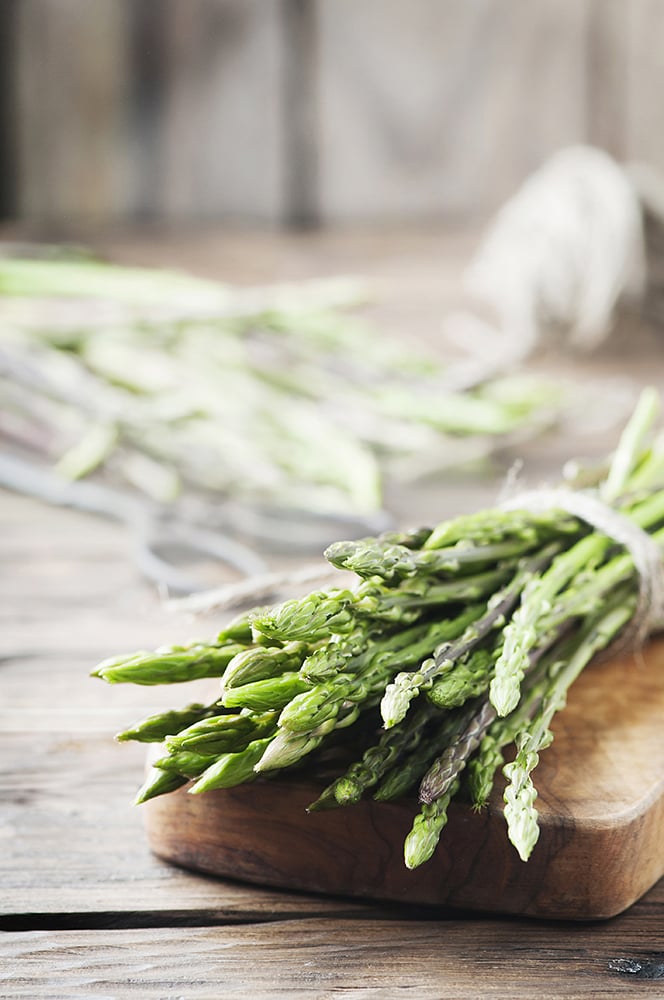Almighty Asparagus
Loaded with nutrients, these spirited spears are a tasty veggie you mustn't miss.

Are you one of those people who overlook asparagus in favor of broccoli and other veggies? If so, you’re missing a bet. This springtime green vegetable is tender, tasty, easy to prepare and packed with nutritional benefits. A natural diuretic, asparagus is also thought to help slow aging and improve cognitive function. So maybe it’s time to make these succulent stalks a menu regular.
POWER UP
Asparagus is good for the heart at least three ways: It’s rich in fiber, which can help lower the risk of cardiovascular disease, and b vitamins, which help regulate the amino acid homocysteine, high levels of which can also be a danger. And it’s full of inflammation-fighting antioxidants—including glutathione, which neutralizes free radicals and works to prevent cell damage. One half-cup serving of this powerhouse vegetable provides 57 percent of your daily requirement of vitamin K (which helps blood clotting and strengthens bones) and 34 percent of your folate (needed to produce dna and help the body’s cells divide properly). Asparagus contains inulin, a “prebiotic” that aids digestion by supporting the colon’s probiotic bacteria. And you get all that—and distinctive taste too—for only 20 calories!
BUY/STORE/SERVE
Choose stalks that are round and neither fat nor twisted. The stems should be firm and thin with deep green or purplish closed tips. To store your spears, wrap a damp paper towel or cloth around the ends and place in your fridge. Try to consume asparagus within 48 hours of purchase, when it’s at its best both in taste and in nutritional value. Pre-cooking prep is minimal. Use a vegetable peeler to remove the outer skin of the stem’s thicker bottom portion, which tends to be tough and stringy. don’t cut the tips off! Wash asparagus under cold water to remove any sand, soil or pesticide residue and then cook stalks whole to maintain nutrients. Serve asparagus as a side dish by sautéing in your choice of vegetable or chicken broth, olive oil or water or baking in the oven, lightly sprinkled with Parmesan cheese. In the mood for a breakfast with a difference? Asparagus makes a flavorful addition to any omelet. Or liven up that lunchtime salad by chopping up asparagus spears—raw or cooked—and tossing them into the mix.
DID YOU KNOW?
China and Peru are the world’s top asparagus producers. There are about 300 varieties of the vegetable, but only 20 are edible. They come in green, white and purple. While green asparagus sprouts out of the ground and is harvested when it’s six to eight inches tall, white asparagus grows under a layer of mulch—it’s white because, lacking sunlight, it doesn’t develop chlorophyll content. (It’s also more tender and delicate in flavor.) Purple asparagus is harvested much smaller than green, at just two
to three inches tall, and tends to be fruitier in flavor. It also has a higher sugar content; phytonutrients called anthocyanins give it its purple hue and provide additional nutritional benefits.

